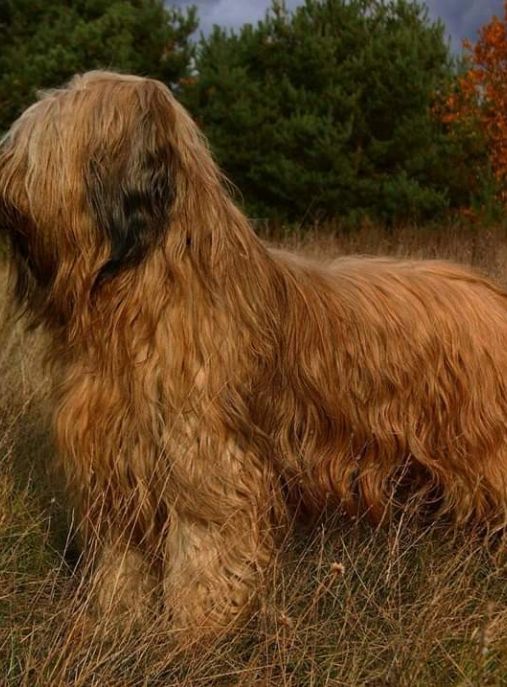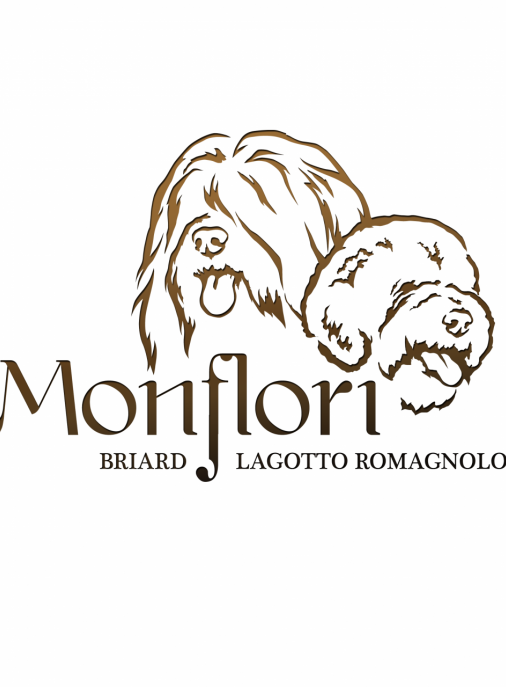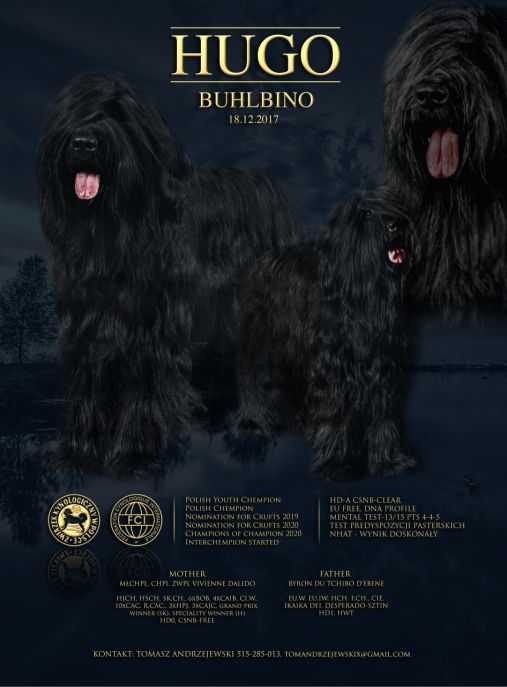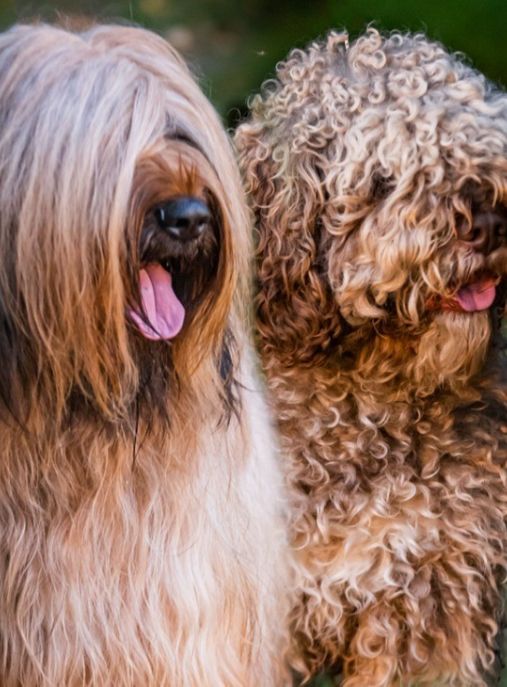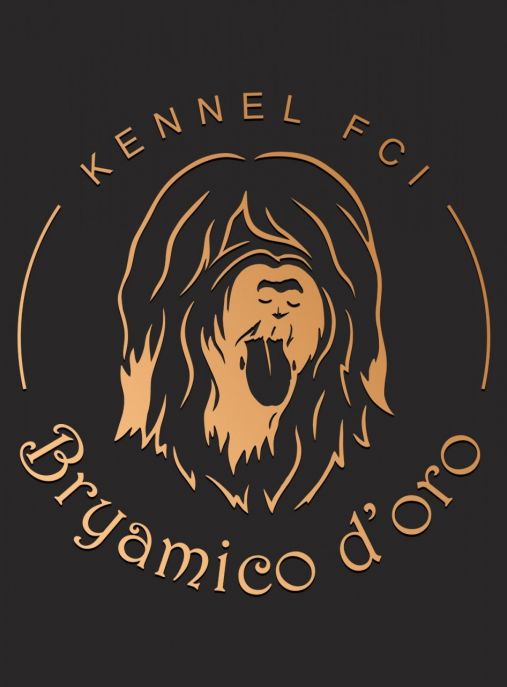The Briard, also known as the Berger de Brie, is a magnificent and versatile dog breed that has captured the hearts of many dog enthusiasts around the world. With its striking appearance, intelligence, and loyalty, the Briard is a breed that stands out from the crowd. In this comprehensive text, we will delve into the history, characteristics, and interesting facts about the Briard breed.
Originating from France, the Briard has a rich history that dates back centuries. It is believed that the breed's ancestors were brought to France by the Celts, who used them as herding dogs. Over time, the Briard's skills expanded beyond herding to include guarding, protecting, and even serving as a military dog during World War I and II. Their exceptional abilities in these roles earned them the nickname "The Heart of the Army."
According to the Fédération Cynologique Internationale (FCI) typology, the Briard belongs to Group 1: Sheepdogs and Cattledogs (except Swiss Cattledogs). This group includes various herding breeds that excel in working with livestock. The Briard's herding instincts and intelligence make it a natural fit for this group.
The Briard is a large and muscular breed, with males typically standing between 23.5 to 27.5 inches (60-70 cm) at the shoulder, while females are slightly smaller, ranging from 22 to 25.5 inches (56-65 cm). In terms of weight, males usually weigh between 70 to 90 pounds (32-41 kg), while females weigh slightly less, ranging from 55 to 77 pounds (25-35 kg).
One of the most distinctive features of the Briard is its long, double coat. The outer coat is coarse and slightly wavy, providing protection against harsh weather conditions, while the undercoat is soft and dense. The coat comes in various colors, including black, fawn, and gray, with occasional white markings on the chest and toes. Regular grooming is essential to maintain the coat's health and prevent matting.
The Briard's temperament is often described as intelligent, loyal, and protective. They are known for their strong bonds with their families and are particularly gentle and patient with children. However, their protective nature means they can be reserved and cautious around strangers, making them excellent watchdogs. Early socialization and training are crucial to ensure a well-rounded and well-behaved Briard.
In terms of health, the Briard is generally a robust breed with a life expectancy of around 10 to 12 years. However, like all breeds, they are prone to certain health conditions, including hip dysplasia, progressive retinal atrophy (PRA), and bloat. Responsible breeders conduct health screenings to minimize the risk of these conditions and ensure the overall health of their breeding stock.
The Briard's intelligence and eagerness to please make them highly trainable. They excel in various dog sports, including obedience, agility, and herding trials. Mental stimulation and regular exercise are essential to keep them happy and prevent boredom-related behaviors.
While the Briard's herding instincts may still be present, they are not commonly used as working herding dogs today. Instead, they have found their place as loyal companions, therapy dogs, and even search and rescue dogs. Their versatility and adaptability make them suitable for various lifestyles, from active families to individuals looking for a devoted and intelligent companion.
In conclusion, the Briard is a remarkable breed with a rich history and exceptional qualities. Their striking appearance, intelligence, loyalty, and versatility make them a beloved choice for many dog enthusiasts. Whether as a family pet, a working dog, or a competitive athlete, the Briard continues to leave a lasting impression on all who have the pleasure of knowing them.
The Briard dog breed is known for its distinctive appearance and remarkable character. With their long, shaggy coats and expressive eyes, Briards are not only visually striking but also possess a unique set of traits that make them exceptional companions. In this text, we will delve into the character of Briard dogs, exploring their behavior, and discussing how to raise and train them effectively.
Briards are renowned for their intelligence and loyalty. They are highly perceptive and have an innate ability to understand their owner's emotions, making them excellent therapy dogs. This breed is incredibly devoted to their family and will go to great lengths to protect and care for them. Their loyalty extends beyond their immediate family, as they are also known to be protective of children and other pets in the household.
Despite their protective nature, Briards are generally friendly and sociable dogs. They tend to get along well with strangers, although they may initially be reserved. Early socialization is crucial to ensure they grow up to be well-rounded and confident dogs. Exposing them to various people, animals, and environments from a young age will help them develop into sociable and adaptable companions.
Briards are energetic and require regular exercise to keep them physically and mentally stimulated. They enjoy activities such as long walks, hikes, and playing fetch. Engaging them in mentally challenging tasks, such as obedience training or puzzle toys, can help prevent boredom and destructive behavior. It is important to note that Briards have a strong herding instinct, so they may try to herd children or other animals. Proper training and redirection of this behavior are essential to ensure they do not become overly bossy or nippy.
Training a Briard requires patience, consistency, and positive reinforcement. They are intelligent dogs that thrive on mental stimulation, so incorporating training sessions into their daily routine is highly beneficial. Briards respond well to reward-based training methods, such as treats, praise, and play. Harsh or punitive training techniques are not recommended as they can damage the trust and bond between the dog and its owner.
Grooming is another important aspect of Briard care. Their long, double coats require regular brushing to prevent matting and tangling. A thorough brushing at least once a week is necessary to maintain their coat's health and appearance. Additionally, regular bathing, nail trimming, and ear cleaning are essential for their overall hygiene.
Briards are known for their independent thinking and can sometimes exhibit stubbornness. It is crucial to establish yourself as the pack leader from an early age to ensure they respect your authority. Consistent rules and boundaries will help them understand their place in the family hierarchy and prevent behavioral issues.
In conclusion, Briards are intelligent, loyal, and protective dogs that make wonderful companions. Their unique character requires proper socialization, exercise, and training to ensure they grow up to be well-behaved and happy dogs. With the right care and guidance, Briards can bring immense joy and love to their owners' lives.
The Briard is a magnificent and intelligent breed known for its loyalty and protective nature. Caring for a Briard requires a commitment to their physical and mental well-being. Here are some tips on how to properly care for Briard dogs, including what to do and what not to do.
1. Grooming: Briards have a long, double coat that requires regular grooming. Brush their fur at least once a week to prevent matting and remove loose hair. Pay special attention to their ears, as they are prone to infections. Regularly check and clean their ears to avoid any issues.
2. Exercise: Briards are an active breed that thrives on physical activity. Provide them with daily exercise, including long walks, runs, or play sessions. Mental stimulation is equally important, so engage them in obedience training, agility, or interactive games to keep their minds sharp.
3. Socialization: Early socialization is crucial for Briards to develop into well-rounded dogs. Expose them to various people, animals, and environments from a young age. This will help them become more confident and adaptable in different situations.
4. Training: Briards are highly intelligent and eager to please. Start training them early using positive reinforcement techniques. They respond well to praise, treats, and consistency. Enroll them in obedience classes to ensure they learn basic commands and proper behavior.
5. Nutrition: Provide a well-balanced diet that meets the nutritional needs of your Briard. Consult with a veterinarian to determine the appropriate amount and type of food for your dog's age, size, and activity level. Avoid overfeeding to prevent obesity, which can lead to health issues.
6. Health care: Regular veterinary check-ups are essential to monitor your Briard's overall health. Vaccinations, parasite prevention, and dental care should be part of their routine. Briards are prone to certain health conditions like hip dysplasia, bloat, and eye problems, so early detection is crucial.
7. Safety: Briards are natural protectors, so it's important to ensure their safety. Secure your yard with a sturdy fence to prevent them from wandering off. Keep toxic substances, plants, and small objects out of their reach. Supervise them around water, as they may be prone to accidents due to their dense coat.
8. Avoid isolation: Briards are social dogs that thrive on human companionship. Avoid leaving them alone for long periods as it can lead to separation anxiety and destructive behavior. Provide them with mental stimulation, toys, and interactive puzzles when you're away.
9. Avoid harsh training methods: Briards are sensitive dogs that respond best to positive reinforcement. Avoid using harsh training methods or punishment, as it can damage their trust and lead to behavioral issues. Instead, focus on reward-based training and consistency.
10. Love and affection: Lastly, Briards are deeply devoted to their families and require love and affection. Spend quality time with them, provide plenty of cuddles, and make them feel like a valued member of your family.
Caring for a Briard requires time, effort, and dedication, but the rewards are immeasurable. By following these tips and providing proper care, you can ensure a happy and healthy life for your beloved Briard companion.
The Briard dog breed is known for its striking and distinctive coat color, which adds to its overall charm and elegance. The most common color seen in Briards is a rich and deep shade of black. This black coat is often described as velvety and lustrous, giving the dog a regal and majestic appearance.
The black color of the Briard's coat is not a solid, uniform shade throughout. Instead, it is usually accompanied by various shades of gray, ranging from light silver to dark charcoal. These different shades of gray blend seamlessly with the black, creating a beautiful and harmonious color combination.
The black coat of the Briard is dense and thick, providing protection against harsh weather conditions. It is also slightly wavy, adding texture and depth to the overall appearance of the dog. This wavy texture gives the coat a natural and effortless look, further enhancing the breed's allure.
One of the most fascinating aspects of the Briard's black coat is its ability to reflect light. When the sun's rays hit the dog's fur, it creates a stunning play of shadows and highlights, accentuating the depth and richness of the color. This effect is particularly noticeable when the dog is in motion, as the coat seems to shimmer and glisten with every step.
Another characteristic of the Briard's black coat is its resilience to fading. Unlike some other dog breeds, the black color of the Briard's coat tends to remain vibrant and intense throughout the dog's life. This longevity of color adds to the breed's allure and ensures that the dog maintains its striking appearance even as it ages.
In addition to the black coat, Briards may also have small patches of white on their chest or toes. These white markings provide a delightful contrast to the black and gray, further enhancing the overall beauty of the dog. However, it is important to note that excessive white markings are not desirable in the breed standard.
Overall, the common color of Briard dogs is a captivating and luxurious black, complemented by shades of gray. This color combination, along with the coat's texture and ability to reflect light, contributes to the breed's elegance and timeless appeal. Whether standing proudly or gracefully trotting, the Briard's black coat is sure to turn heads and leave a lasting impression.
The Briard dog breed is known for its robust health and overall vitality. However, like any other breed, they are prone to certain health conditions. Understanding these common diseases and taking appropriate care can help ensure the well-being of Briard dogs.
One of the most prevalent health issues in Briards is hip dysplasia. This condition occurs when the hip joint doesn't develop properly, leading to pain, lameness, and arthritis. Regular exercise on soft surfaces, maintaining a healthy weight, and avoiding excessive jumping or rough play can help reduce the risk of hip dysplasia. Additionally, breeding dogs with certified healthy hips can help minimize the occurrence of this condition in future generations.
Another common health concern in Briards is progressive retinal atrophy (PRA). This genetic disorder causes the degeneration of the retina, leading to gradual vision loss and eventual blindness. Regular eye examinations by a veterinary ophthalmologist can help detect PRA early on, allowing for appropriate management and lifestyle adjustments to accommodate the dog's visual impairment.
Bloat, also known as gastric dilatation-volvulus (GDV), is a life-threatening condition that affects deep-chested breeds like the Briard. It occurs when the stomach fills with gas and twists on itself, cutting off blood supply. Immediate veterinary attention is crucial if bloat is suspected, as it requires emergency surgery. To reduce the risk of bloat, it is recommended to feed Briards smaller, frequent meals, avoid vigorous exercise immediately after meals, and use elevated feeding bowls.
Hypothyroidism is another health issue seen in Briards. This condition occurs when the thyroid gland doesn't produce enough hormones, leading to weight gain, lethargy, and skin problems. Regular blood tests can help diagnose hypothyroidism, and treatment typically involves lifelong hormone replacement therapy.
Like many large breeds, Briards are also prone to certain types of cancer, including lymphoma and osteosarcoma. Regular veterinary check-ups, early detection, and prompt treatment are crucial in managing these conditions. Additionally, maintaining a healthy lifestyle, providing a balanced diet, and avoiding exposure to environmental toxins can help reduce the risk of cancer.
To ensure the overall health of Briard dogs, it is important to provide them with regular exercise to keep them physically fit and mentally stimulated. Daily walks, playtime, and activities that challenge their intelligence are essential. A balanced diet, appropriate for their age and activity level, is crucial in maintaining their overall well-being. Regular grooming, including brushing their thick double coat, is necessary to prevent matting and skin issues.
Routine veterinary check-ups are vital for early detection of any health issues. Vaccinations, parasite prevention, and dental care should be part of their regular healthcare routine. Additionally, providing a safe and stimulating environment, socializing them from an early age, and training them using positive reinforcement techniques can contribute to their overall mental and emotional health.
In conclusion, while Briards are generally a healthy breed, they are prone to certain health conditions. Being aware of these common diseases and taking appropriate preventive measures can help ensure the well-being of Briard dogs. Regular veterinary care, a balanced diet, exercise, and a loving environment are key to maintaining their health and happiness.
The Briard dog breed is known for its intelligence, loyalty, and agility. To ensure their overall health and well-being, it is crucial to provide them with a balanced and nutritious diet. Proper nutrition plays a vital role in maintaining their energy levels, promoting healthy growth, and preventing various health issues. In this text, we will discuss the nutritional needs of Briard dogs, offer advice on feeding them, and highlight foods to avoid.
Briard dogs are medium to large-sized dogs with a muscular build, weighing between 50 to 100 pounds. They are active and energetic, requiring a diet that provides them with the necessary fuel to support their daily activities. A balanced diet for a Briard should consist of high-quality proteins, healthy fats, carbohydrates, vitamins, and minerals.
Protein is an essential component of a Briard's diet as it supports muscle development and repair. Good sources of protein for Briards include lean meats like chicken, turkey, and fish. It is important to ensure that the protein sources are of high quality and free from any additives or fillers.
Healthy fats are also crucial for Briard dogs as they provide energy and support their skin and coat health. Incorporating omega-3 fatty acids, found in fish oil or flaxseed oil, can help maintain a shiny and healthy coat. However, it is important to monitor the fat intake to prevent weight gain, as Briards can be prone to obesity.
Carbohydrates are a valuable energy source for Briards, but it is important to choose complex carbohydrates over simple ones. Complex carbohydrates, such as whole grains (brown rice, quinoa) and vegetables, provide a steady release of energy and are rich in fiber, aiding in digestion. Avoid feeding your Briard excessive amounts of simple carbohydrates, such as refined grains and sugary treats, as they can lead to weight gain and potential health issues.
Vitamins and minerals are essential for a Briard's overall health. A well-balanced diet should include a variety of fruits and vegetables to provide a wide range of nutrients. However, it is important to avoid feeding Briards certain fruits and vegetables that can be toxic to dogs, such as grapes, raisins, onions, and garlic.
Feeding schedules and portion control are crucial for Briard dogs. Puppies require more frequent meals, usually three to four times a day, while adult Briards can be fed twice a day. The exact portion size will depend on the individual dog's age, weight, activity level, and overall health. Consulting with a veterinarian or a canine nutritionist can help determine the appropriate portion sizes for your Briard.
While it is important to focus on providing a nutritious diet, it is equally important to avoid certain foods that can be harmful to Briards. Some foods to avoid include chocolate, caffeine, alcohol, onions, garlic, grapes, raisins, avocados, and foods high in sodium or artificial additives. These foods can be toxic to dogs and may lead to serious health issues.
In conclusion, a well-balanced and nutritious diet is essential for the health and well-being of Briard dogs. Providing them with high-quality proteins, healthy fats, complex carbohydrates, and a variety of fruits and vegetables will support their overall health, energy levels, and promote a shiny coat. Remember to consult with a veterinarian or a canine nutritionist to determine the specific dietary needs of your Briard and to ensure they receive the best possible nutrition.
